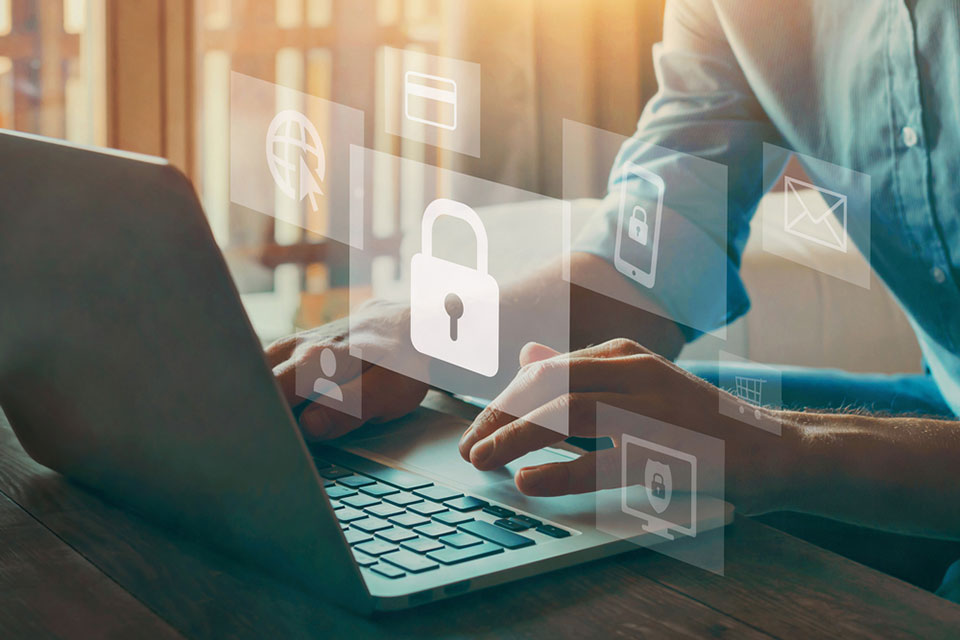The Importance of Protecting Work From Anywhere Employees Against Cyber Attacks

The pandemic has changed the face of the workplace ecosystem, exposing more employees to the benefits of working remotely and enjoying better autonomy in their work-life balance.
Yet, in the same breath, the pandemic also pulled back the covers on companies’ weak and lax cybersecurity systems, revealing an unruly state which has led to more than $6 trillion in damages due to cybercrime. And that’s only the beginning, experts suggest that by 2025, that number is set to increase to more than $10.5 trillion by 2025.
The sharp rise in costly cybercrimes has been a growing trend throughout much of the pandemic, and back in 2020, Deloitte research found that an increased number of remote workers and lax online security systems helped fuel the increase in cybercriminals.
Businesses, both big and small, have been upgrading their robust security systems, as cyber-attacks are becoming more frequent, and more advanced.
Currently, around 22% of small business owners have been increasing their cyber budgets year-over-year to mitigate the chances of a potential cyber threat.
While companies have been working to install high-end security systems, from firewalls to encrypted virtual workspaces, reports have found that 74% of companies attribute increased cyberattacks to remote work software vulnerabilities.
Employers who have adopted a remote working model, or allow their employees to work from anywhere in the world will experience an ongoing threat to their systems’ security, as factors such as cloud migration and low-quality at-home internet networks are only adding to the issues of cybersecurity.
Despite these challenges and the growing threat of cybercrime, employers are still able to help their employees improve their security systems, not only as a way to protect confidential information or data – but also to mitigate the rising number of annual online attacks.
To thwart attackers, here are some basics employers and business owners can do to scale their remote team security.
Educate employees
The best place to start, and perhaps the easiest as well as with your employees. Educating employees about the different types of cyberattacks that exist will help them to recognize a potential threat, or even report any suspicious activity.
All staff members should be thoroughly informed about how they can protect their devices and their personal, or work-related documentation when working from anywhere in the world. Seeing as these employees are more location independent, they often connect to different networks throughout the day and receive a plethora of emails, all of which can lead to a potential cyber-attack.
Upgrade security protocols
No matter how secure you may think your servers and employee devices are, no business or organization is safe these days. To put this into perspective, on Labor Day this year, America’s second-largest school district – Los Angeles Unified School District – was victim to a cyber attack, causing “significant disruption” to the district’s infrastructure according to official reports.
Routinely upgrading systems and infrastructure will help add some peace of mind. Not only this, but cybersecurity experts will be able to make system management recommendations based on current cyber threat trends and the needs of the business as well. It’s one thing to have a security protocol, but it’s something completely different to maintain and upgrade it every now and again.
Use strong passwords
It might seem like a straightforward observation, but too many employees are still making use of weak passwords, giving hackers easier access to their devices and files.
Employees should ensure their devices are protected with strong long-tail passwords. The longer, and more complex the better.
Passwords don’t completely protect your devices or files, but it is yet another barrier cybercriminals will need to crack through before having access to your files.
Minimize the use of work devices for personal matters
A major threat to businesses and organizations is the fact that so many of their employees use their work devices for personal reasons. From browsing through the internet to checking social networks or even signing up for newsletters, all of these actions play a role when it comes to remote employees’ cybersecurity.
Advise workers to rather use a different device, either a second computer, tablet, or smartphone to access the internet, instead of using work-related tech.
It’s tough, because it does mean employees will need to be compensated for acquiring a second device, but employers should be open to negotiating these practices with their staff beforehand.
Control and protect online meetings
Remote teams that make use of videoconferencing platforms such as Zoom and Google Meet are opening their data and information to potential hackers.
Back in 2021, it was found that a new hacking trend was going around, spoofing employees with fake prompts related to Zoom meetings. Dubbed the Zoom Phishing Attack, employees who clicked and opened suspicious-looking links experienced major security breaches, resulting in costly repairs for companies.
Companies should monitor and control access to Zoom meetings, and ensure that employees never click unknown links before checking with their manager or superiors.
Even though these links may look like the real deal, it’s easy to get caught clicking one of the 3.4 billion daily phishing emails or links that get sent every day.
Use secure wifi networks
It’s difficult for employers to manage systems that are outside of their control, but it’s best advised to encourage employees to make use of secured and encrypted wifi networks as much as possible.
Public wifi networks, such as those in restaurants and cafes tend to carry limited protection, and most often you’re not able to see who’s connected to the network.
The same goes for at-home internet systems that may have very minimal security protocols. Employers should promote ways in which they can help their staff increase their at-home internet connections, and minimize the use of public networks.
Install company-wide VPNs
Another way to help protect remote employees against any potential threats is to make use of a Virtual Private Network or VPN.
A VPN works great for people who frequently connect to public wifi networks, such as remote employees and digital nomads. The VPN can help to encrypt internet traffic and disconfigures the location of devices when accessing websites and other online portals.
Although a VPN has the potential to slow down internet connections, it’s better to be prepared than to resolve a malware or phishing attack on your organization and workers.
Cybercrime is becoming a major issue for many individuals, and companies, it’s also becoming an expensive exercise. For organizations that have employees working remotely or hybrid, it’s best to encourage online safety and security as much as possible.
Ensuring workers’ devices are encrypted, and protected against any malicious activities means that the business has an added layer of security.
It’s a bit harder to manage remote employees, seeing as they can work from any location, and frequently connect to public wifi networks, a big threat to a company’s cybersecurity. Employers should educate workers, and ensure that the right infrastructure already exists within the company.
Cyberthreats will only become more persistent in the coming future as more people transition online, and more companies adopt remote working. The best is to be prepared as much as possible, as prevention is always better than cure.
Written by Jacob Wolinsky.
Have you read?
Best Business Schools In The World For 2022.
Best Fashion Schools In The World For 2022.
Best Hospitality And Hotel Management Schools In The World For 2022.
Best Medical Schools In The World For 2022.
The World’s Best Universities For Doctor of Business Administration (DBA), 2022.
Add CEOWORLD magazine to your Google News feed.
Follow CEOWORLD magazine headlines on: Google News, LinkedIn, Twitter, and Facebook.
Copyright 2024 The CEOWORLD magazine. All rights reserved. This material (and any extract from it) must not be copied, redistributed or placed on any website, without CEOWORLD magazine' prior written consent. For media queries, please contact: info@ceoworld.biz








